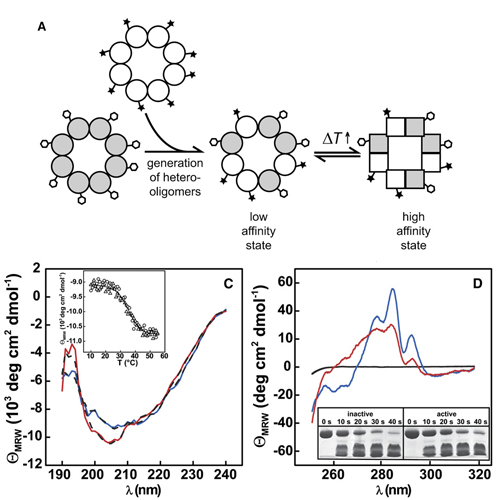Activation of the Chaperone Hsp26 is Controlled by the Rearrangement of Its Thermosensor Domain
01-Feb-2008
Cells respond to a sudden increase in temperature with the transcription of a special set of genes, a phenomenon known as the heat shock response. In the yeast S. cerevisiae, the molecular chaperone Hsp26 is one component of the heat shock response. Hsp26 has the remarkable ability to sense increases in temperature directly and can switch from an inactive to a chaperone-active state. The underlying principle of this temperature regulation has remained enigmatic. Hsp26 variants with altered spectroscopic properties allowed us to identify structural elements controlling this activation process. We show that temperature sensing by Hsp26 is a feature of its middle domain that changes its conformation within a narrow temperature range. This structural rearrangement allows Hsp26 to respond autonomously and directly to heat stress by reversibly unleashing its chaperone activity. Thus, the Hsp26 middle domain is a thermosensor and intrinsic regulator of chaperone activity.











